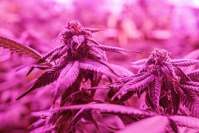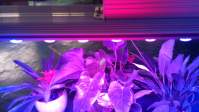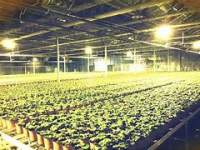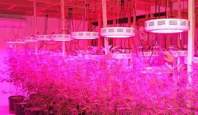Why can LED plant lights replace "sunlight" to regulate plant growth?
LED plant lights are known as the indoor "sun", which can replace sunlight and ensure the healthy growth of plants indoors. The development of indoor agriculture has proven that, for plants, LED plant lights can even surpass sunlight. Why can LED plant lights replace "sunlight" to regulate the growth of indoor plants? What are its advantages compared to sunlight? This has to start with the absorption and utilization of light by plants.
Plants absorb light like this
The absorption of light by plants is mainly through photosynthesis.
In this process, plants use their own "light-harvesting antenna" photosynthetic pigments to absorb sunlight and convert it into chemical energy for storage in the form of sugar, and then use this energy for growth.
A part of the absorbed light can be used as an environmental signal factor to participate in the regulation of a series of plant growth and development behaviors, such as seed germination, morphological formation, flowering, and the synthesis of secondary metabolites.
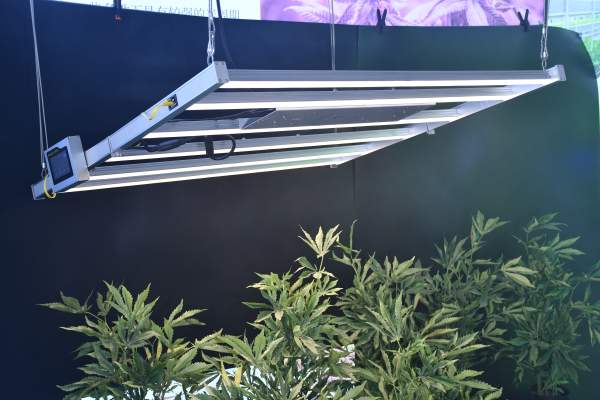
Light plays an important role in the growth of plants.
Plants are also picky eaters of light
Solar spectrum decomposition
The plants bathed in sunlight actually only absorb a small part of the sunlight, and most of the other sunlight cannot be used by the plants.
This is because the wavelength range of sunlight covers the entire electromagnetic spectrum from X-rays to radio waves, and the photosynthetically active radiation available to plants is in the range of visible light (400-780nm), which is what we often call red, orange, and yellow. Seven colors of green, blue, and purple.
Spectral analysis shows that among the seven colors of light, plants mainly absorb red and blue light for photosynthesis. The green light, yellow-orange light and far-red light and other trace light are involved in other metabolic processes of plant growth.
In addition to the composition of the spectrum, the growth of plants still requires a suitable photoperiod and light intensity.
We call the sum of plant requirements for spectrum and photoperiod, light intensity, and light mode as light formula.
Design "light recipes" for plants
Yaorongke R&D engineers are performing spectral inspection
It is precisely because of the "recognition" and "preference" of light by plants that provide theoretical guidance for artificial light cultivation of plants.
About Spectrum
Among the seven-color light, red light and blue light mainly regulate the photosynthesis of plants, thereby affecting the yield.
This is because when plants perceive more red light through "light-harvesting antennas," they release a hormone that prevents the decomposition of chlorophyll. This allows plants to convert light energy into more chemical energy, and plants can grow stronger. Plants still need red light to bloom and bear fruit normally.
The blue light receptors of plants trigger hormonal responses when they perceive higher levels of blue light, thereby slowing down the growth of stems and leaves, so blue light can help plants grow thicker.
About light intensity & light cycle
In addition to the composition of the spectrum, the growth of plants still requires appropriate light intensity and photoperiod.
Within a certain range of light intensity, the photosynthetic rate of plants accelerates with the increase of light intensity, but not blindly increase the light intensity. For each plant or each stage of development, too high light intensity on the one hand leads to photoinhibition, which affects yield and quality, on the other hand, it wastes a lot of electrical energy and increases the cost of investment.
Design "light recipes" for plants
After fully understanding the needs of different plants and different growth stages of the same plant for light formulas, researchers design "light recipes" and use LED "core light" technology to balance the relationship between yield, quality and energy consumption. , Designed LED plant supplement light lamp that can not only meet the energy requirements of plant photosynthesis, but also be suitable for the precise control of its growth and development, while saving energy and costs in production, realizing artificial light to replace sunlight and helping plant health Growth.
The LED plant light with suitable light formula not only can ensure the efficient progress of plant photosynthesis, but also the special light formula can regulate the behavior of plants like condiments, making vegetables more delicious and nutritious, flowers more vivid and fruit sweeter And more nutritious.
Controllable "sun"
Young leaf vegetables growing under LED plant lights
The LED plant light is powerful, it is not only energy-saving, high-efficiency and long service life, but also has low heat output. It can be closer to plants, which is very suitable for indoor farming. Compared with the sun, the biggest advantage of LED plant lights is its controllability.
We all know that the sun is the energy source for the growth of everything, but it is not foolproof.
The rotation of the earth will cause the position of the sun to change continuously and the sun will "disappear" in rainy weather, which means that plants cannot always enjoy sunbathing. Sunlight is shared by all things, and there is no preference for any kind of plant, but plants can only adapt to it.
With the emergence of artificial lighting, especially the birth of LED plant lights, everything is different.
Unlike the instability of the sun, LED plant lights will not change their intensity with day or night and summer or winter and rain or sunny days. It can provide plants with stable and consistent light.
LED plant lights allow growers to "control" the light
In addition, as mentioned above, we can also accurately design and tailor the light formula of plants. For example, if different crops are given different light, tomato prefers purple light and more purple light, blueberry prefers red light and more red light; for example, different light is provided for different growth stages of the same crop, cell division speed and photosynthesis in seedling stage of plants Use more intense blue light to make the seedlings grow stronger; red light in this period can easily cause plants to grow thin and weak, so control the amount of red light; in the fruit-bearing period, you can lighten more red light to promote the fruit The expansion of the fruit increases the sugar accumulation of the fruit and makes the fruit more delicious.
LED plant lights allow farmers to get the "sunlight" they need anytime and anywhere, and provide them with what they can't have under the sun, that is, "control".


